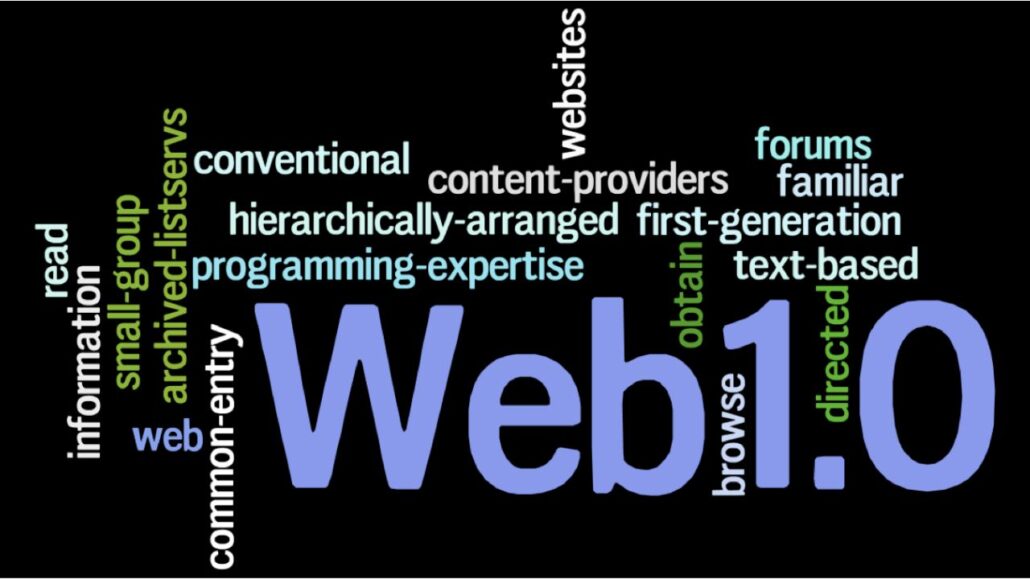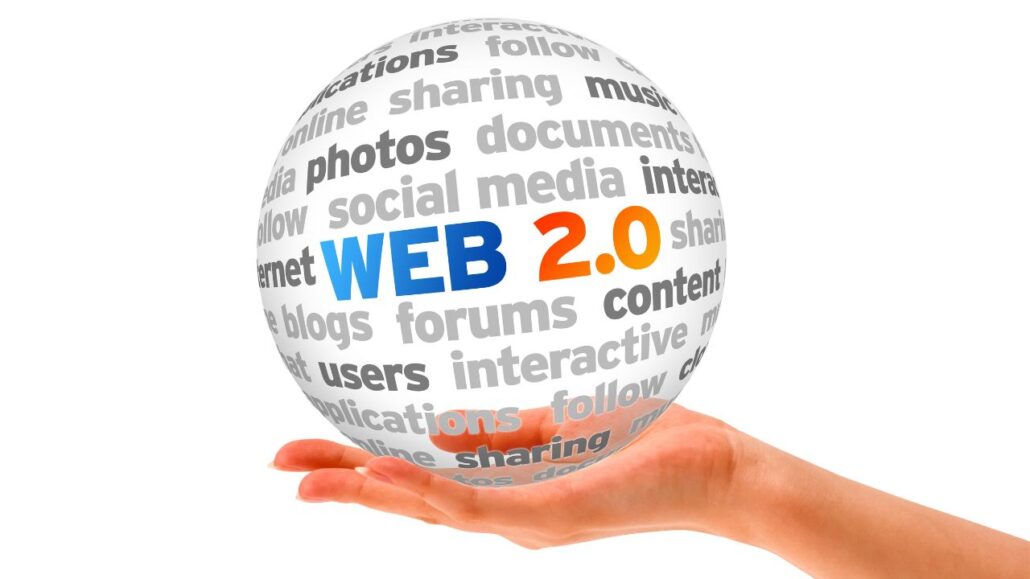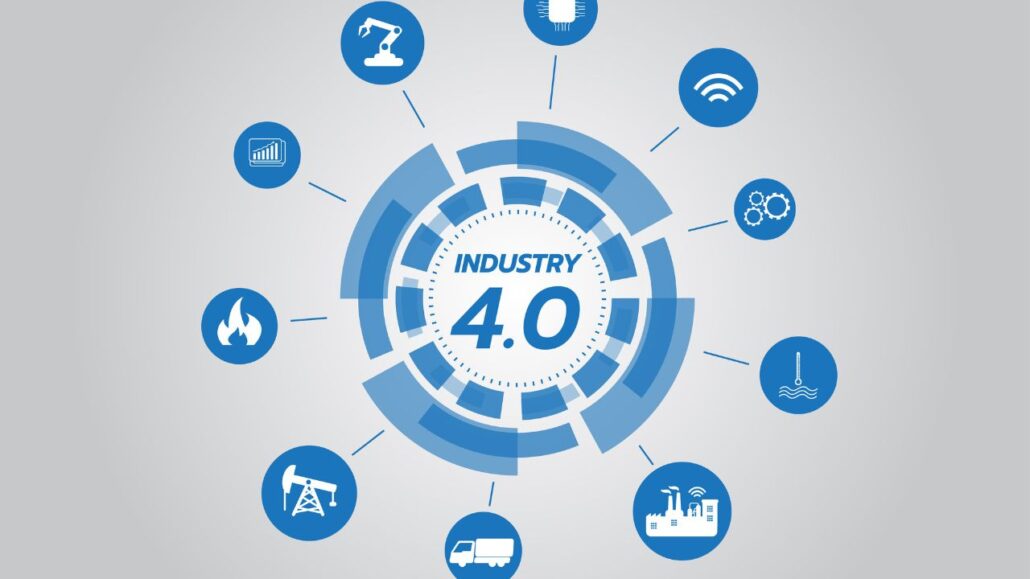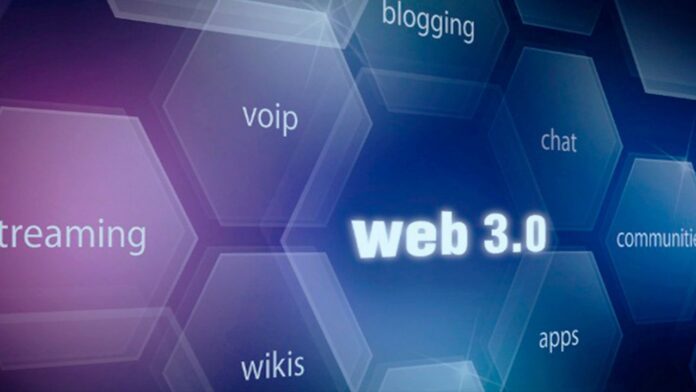The Internet has transformed dramatically, giving birth to various web eras. The evolution from Web 1.0 to Web 2.0 and, finally, Web 3.0 has revolutionized how we interact with the Internet and the information it holds—distinctions between these web phases, shedding light on their features, advantages, and what lies ahead.
Web 1.0 is the “read-only Web, “Web 2.0 is the “Web participative social,” and Web 3.0 is the “write, read, execute Web.
Web Evolution
The Internet, often called the World Wide Web, has undergone significant phases of development, each marked by distinctive features and functionalities. It’s crucial to comprehend these evolutionary stages to appreciate the technology-driven world we live in today.
Brief Explanation of Web 1.0
Web 1.0, also known as the “Static Web,” was the initial stage of the Internet. During this era, web pages were static and read-only. Websites were primarily information repositories, needing more interactive and dynamic elements than we’re accustomed to today.
Example Web 1.0
- StaticSiteCentral.com
- HyperlinkHub.net
- BasicWebPages.com
- TextOnlyWeb.com
- PageGallery.org
- EarlyWebPages.com
- HTMLHaven.com
- WebPioneerZone.net
- SimpleWebScape.com
- InfoJunction.org
Transition to Web 2.0
The transition to Web 2.0 brought a paradigm shift. Users started actively participating, generating content, and engaging with each other. This era emphasized user-generated content, social networking, and interactive web applications.
Emergence of Web 3.0
Web 3.0, often called the “Intelligent Web” or “Semantic Web,” is the ongoing phase characterized by AI integration, contextual understanding, and machine learning. It focuses on making the Web more intelligent and efficient in understanding user needs and delivering relevant results.
Characteristics and Features of Web 1.0

Static Web Pages
Web 1.0 was dominated by static web pages, lacking the dynamic elements we find in modern websites. These pages presented information in a one-way flow with limited user interaction.
Limited Interactivity
The interaction was restricted to clicking on links that led to different pages. There was no real-time interaction or user participation in shaping the content.
Information-Focused
Web 1.0 was primarily information-centric. Websites acted as data repositories, disseminating information to users with little engagement.
Transition Features to Web 2.0

User-Generated Content
Web 2.0 witnessed a fundamental shift towards user-generated content. Platforms encouraged users to contribute, share, and collaborate, forming a dynamic and interactive web.
Social Networking and Collaboration
Social media platforms and collaborative tools gained prominence, enabling users to connect, share ideas, and collaborate globally.
Interactive Web Applications
Web 2.0 introduced dynamic web applications, allowing users to interact with content in real time, shaping their online experiences.
Web 2.0 in Detail
Example Web 2.0 Name
- SocialSphere
- WebVibe
- TechnoTribe
- BuzzHub
- PixelPulse
- CloudCraze
- CodeNest
- NetFusion
- ByteWave
- SparkSync
- DataDrift
- Innov8Web
- InteractaNet
- IdeaWave
- TrendLoom
- LinkLeap
- ShareSphere
- DigitalDive
- FlexFlow
- TechTide
Dynamic Content and Multimedia
Web 2.0 brought a wave of dynamic content, multimedia integration, and enhanced user experiences through videos, images, and interactive elements.
Social Media Integration
The rise of social media platforms like Facebook, Twitter, and LinkedIn epitomized the collaborative nature of Web 2.0, fostering a sense of community and interaction among users.
Mobile Compatibility
Web 2.0 emphasized mobile compatibility, ensuring users could seamlessly access and interact with web content on various devices.
Evolution to Web 3.0

Semantic Web and Machine Learning
Web 3.0 uses machine learning and AI to comprehend context and intent, providing users with more precise and relevant search results.
Web 3.0, often called the “Semantic Web,” is the next evolutionary phase of the Internet, promising a more intelligent, intuitive, and interconnected online experience. Unlike its predecessors, Web 3.0 is characterized by a convergence of technologies and the ability to understand and interpret data, making it highly efficient and personalized.
Personalization and AI Integration
Personalized experiences are a hallmark of Web 3.0, tailoring content and services based on individual preferences and behavior.
Internet of Things (IoT) and Connected Devices
Web 3.0 extends to the Internet of Things, where interconnected devices offer a seamless and intelligent web experience, integrating physical and digital realms.
Features of Web 3.0
Example Web 3.0 Name
- BlockSphere
- DecenTrade
- CryptoNetHub
- EtherWeb
- ChainVerse
- DeFiNest
- QuantumWeb
- MetaMesh
- NFT Nexus
- TrustWeb
Contextual Apprehension
Web 3.0 focuses on understanding context, enabling the Web to interpret user requirements more accurately and deliver highly relevant outcomes.
Intelligent Search and Recommendations
AI-driven algorithms power intelligent searches and recommendations, presenting users with precisely what they need based on their behavior and preferences.
Evolution from Web 1.0 to Web 3.0
The Internet has seen remarkable transformations, from the static Web 1.0 of the early days to the interactive Web 2.0. Web 3.0 represents a leap forward, embracing machine learning, AI, and decentralized technologies to provide a more dynamic and informative web.
Decentralization and Web 3.0
Web 3.0 operates on a decentralized framework, reducing reliance on central authorities. This ensures enhanced transparency, security, and the ability for users to have more control over their data and online interactions.
Enhanced User Experience in Web 3.0
Web 3.0 creates a seamless and user-centric experience by tailoring content and services based on individual preferences and behaviors. This results in a more intuitive and personalized browsing journey.
AI and Machine Learning Integration
Integrating AI and machine learning in Web 3.0 enables intelligent data analysis and prediction, facilitating better search results, content recommendations, and automation of various tasks, revolutionizing how we interact with the Web.
Interoperability and Web 3.0
Web 3.0 promotes interoperability between different applications and platforms, allowing seamless sharing and integration of data, services, and content across the Internet.
Enhanced Security and Privacy
Security and privacy are paramount in Web 3.0, achieved through encryption and decentralized storage. This safeguards user data and instills trust, a crucial aspect in the evolving digital landscape.
The Role of Blockchain in Web 3.0
With its decentralized and immutable ledger, blockchain technology significantly ensures trust and security in Web 3.0. It’s utilized for transactions, identity verification, and data integrity.
Semantic Web and Web 3.0
Semantic Web technologies enable machines to understand and process information like humans, leading to more efficient searches and contextually relevant results.
IoT and Web 3.0
Web 3.0 integrates the Internet of Things (IoT) seamlessly, allowing real-time communication and control across various devices and systems, enhancing efficiency and connectivity.
Augmented Reality (AR) and Web 3.0
Web 3.0 incorporates AR, providing an immersive experience by overlaying digital information onto the real world, transforming how we perceive and interact with our surroundings.
Smart Contracts and Web 3.0
Smart contracts, self-executing contracts with coded terms, are a fundamental aspect of Web 3.0. They automate processes, enhance security, and reduce reliance on intermediaries.
Future Implications of Web 3.0
The potential future applications of Web 3.0 are vast, ranging from advanced AI-driven healthcare systems to decentralized social networks, promising a transformative impact on various industries.
Challenges and Concerns with Web 3.0
While Web 3.0 holds immense promise, it must address challenges such as data privacy, scalability, and regulatory frameworks to ensure its successful adoption and implementation.
What Is Web 4.0? Features and Definition

The term “Internet 4.0,” also called “Web 4.0,” refers to a future stage of the Web where users may interact more easily. This generation’s growing use of social media and mobile devices is distinctive.
Contextual and Personalized Experiences
Web 4.0 might involve highly personalized experiences based on a user’s preferences, behaviors, and context. Artificial intelligence (AI) and machine learning algorithms could be integrated to understand user intent better and provide tailored content and interactions.
Advanced Artificial Intelligence (AI) Integration
AI could play an even more significant role in Web 4.0, enabling intelligent agents that assist users in various tasks, ranging from searching for information to making complex decisions. Natural Language Processing (NLP) and other AI capabilities could enhance user interactions.
Interoperability and Seamless Integration
Web 4.0 may prioritize seamless integration and interoperability among various applications and platforms. This could lead to a more interconnected digital ecosystem where different services can seamlessly interact and share data.
Decentralization and Blockchain Technology
Building on the trends of decentralization seen in blockchain technology, Web 4.0 might integrate decentralized protocols, enabling users to have more control over their data and interactions on the Internet.
Internet of Things (IoT) Integration
Web 4.0 might fully integrate IoT devices, allowing for a highly interconnected web where devices can communicate, share data, and make intelligent decisions collectively.
Immersive Technologies (Virtual Reality/Augmented Reality)
Enhanced virtual and augmented reality experiences could become an integral part of the Web, providing immersive and interactive content for users.
Enhanced Security and Privacy
With an increasing focus on privacy and security, Web 4.0 may introduce advanced security measures and technologies to effectively protect users’ data and privacy.
Comparison Between Web 1.0, Web 2.0 and Web 3.0
Web 1.0 was a static and one-way experience for users. Websites were designed only to provide information without allowing users to engage or interact. Content creation was limited to web developers. Technologies like HTML and CSS were used to create basic websites. User experience was not a priority as people were still getting used to the idea of the Internet.
Web 2.0 revolutionized the Internet by allowing users to interact with each other and websites. It gave birth to social media and user-generated content. Anyone could create and share content on the Internet, making it more dynamic and engaging. Technologies like JavaScript and Flash made the user experience a priority by providing interactive interfaces.
Web 3.0 takes it a step further by introducing technologies like AI, Blockchain, and Big Data. User experience is personalized and intuitive, making it easier for individuals to find information and products. Content is tailored for users based on their preferences and habits. The creation of content is still in the hands of the user, but these technologies ensure its accuracy and relevance.
Overall, the evolution of the Internet has brought about significant changes in the way we interact, create, and consume content. It has changed the way businesses operate and how users perceive the Internet. Keeping oneself updated with ongoing web evolution is essential to ensure that you are able to stay caught up in this constantly evolving digital world.
Conclusion
The evolution from Web 1.0 to Web 3.0 is crucial for navigating the digital landscape. Web 1.0 was static; Web 2.0 brought interactivity and social aspects, while Web 3.0 emphasizes AI, blockchain, and a more personalized, intelligent web experience. Each phase has significantly impacted how we interact with the Internet and its potential applications.
FAQ:
What is Web 1.0?
Web 1.0 refers to the early stage of the Internet, characterized by static web pages and limited user interaction.
How Does Web 2.0 Differ From Web 1.0?
Web 2.0 introduced dynamic and interactive websites, enabling user-generated content, social networking, and greater user engagement.
What are the Key Features of Web 2.0?
Key features of Web 2.0 include social media, blogging, wikis, and collaborative platforms, fostering user participation and content sharing.
What is the Concept of Web 3.0?
Web 3.0 envisions a more intelligent web powered by advanced technologies like AI, semantic Web, and blockchain, emphasizing personalized experiences and more intelligent data handling.
How Does Web 3.0 Differ From Web 2.0?
Web 3.0 focuses on decentralized, AI-driven, and semantic web technologies, aiming for a more interconnected and intelligent internet compared to the user-generated content focus of Web 2.0.
What is the Difference of Web 1.0, Web 2.0, and Web 3.0 (Brainly)?
- Web 1.0: Static Web, limited user interaction.
- Web 2.0: Dynamic, interactive, user-generated content.
- Web 3.0 (Brainly): Anticipated semantic Web, AI-driven, smarter interactions.
Difference Between Web 1.0, Web 2.0, and Web 3.0 (PDF)?
- Web 1.0: Basic HTML pages, static content.
- Web 2.0: Interactive, social, dynamic content.
- Web 3.0 (PDF): PDF likely refers to document format, not applicable to web evolution.
Difference Between Web 2.0 and Web 3.0 (Quora)?
- Web 2.0: Interactive, user-generated content, social media.
- Web 3.0 (Quora): Potentially AI-driven, context-aware, more intelligent information retrieval.
Difference Between Web 2.0 and Web 3.0 in Terms of Architecture?
- Web 2.0: Focus on social networking, collaboration, and APIs.
- Web 3.0: Emphasis on decentralized data, semantic Web, and AI integration.
Web 1.0, 2.0, and 3.0 on Quora?
Likely a discussion about the evolution and impact of the web eras on Quora’s platform.



